With their giant, flamboyant blooms, few plants can rival the peony for their elegance and beauty.
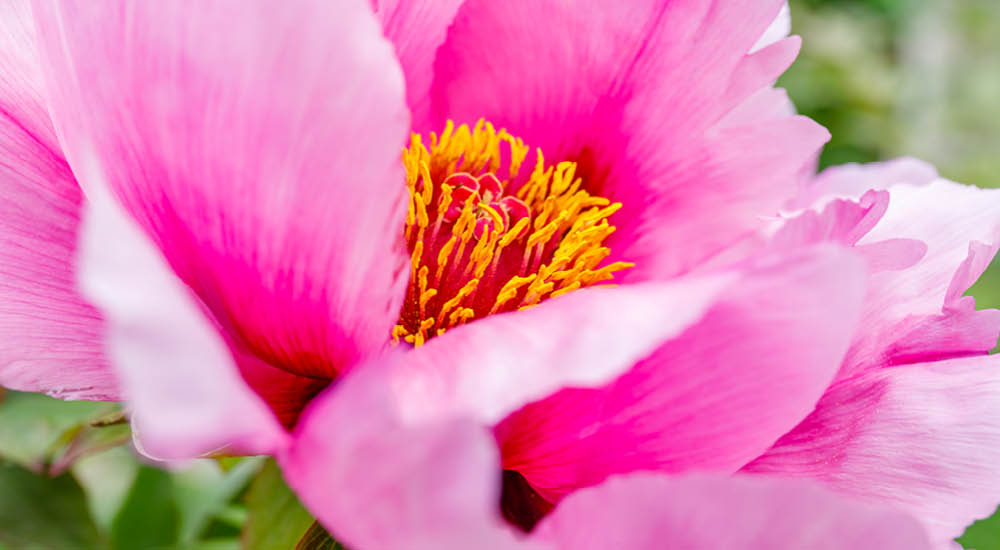
Peonies are easy to grow herbaceous plants that once established, can live for decades, often up to fifty years. They’re unrivalled when in flower and make an excellent low maintenance plant that’s perfect for beginners and experienced gardeners alike.
There are three types available: herbaceous types, which die back to ground level every winter; tree peonies, which are taller and shrubby, keeping their woody frame throughout winter; and intersectional hybrids, which are a cross between tree and herbaceous types. The intersectional hybrids are often labelled as ‘Itoh’ after the Japanese breeder, Toichi Itoh, who hybridized an herbaceous peony with a tree peony in the late 1940s.
The 3 rules for growing perfect peonies:
1. Don’t plant them deep
Peony crowns like to be close to the soil surface. If you plant the crown any deeper than 2.5cm they may give wonderful foliage, but they simply won’t flower. A good tip is to plant the peony at the same soil depth that it was grown in the pot.
If you have a peony in the garden and it isn’t flowering, it’s probably because it has been planted too deep or it has been buried when you applied mulch to your borders. Wait until the autumn to rectify, by lifting your peony and re-planting it at the right depth, taking care not to damage the buds on the roots.
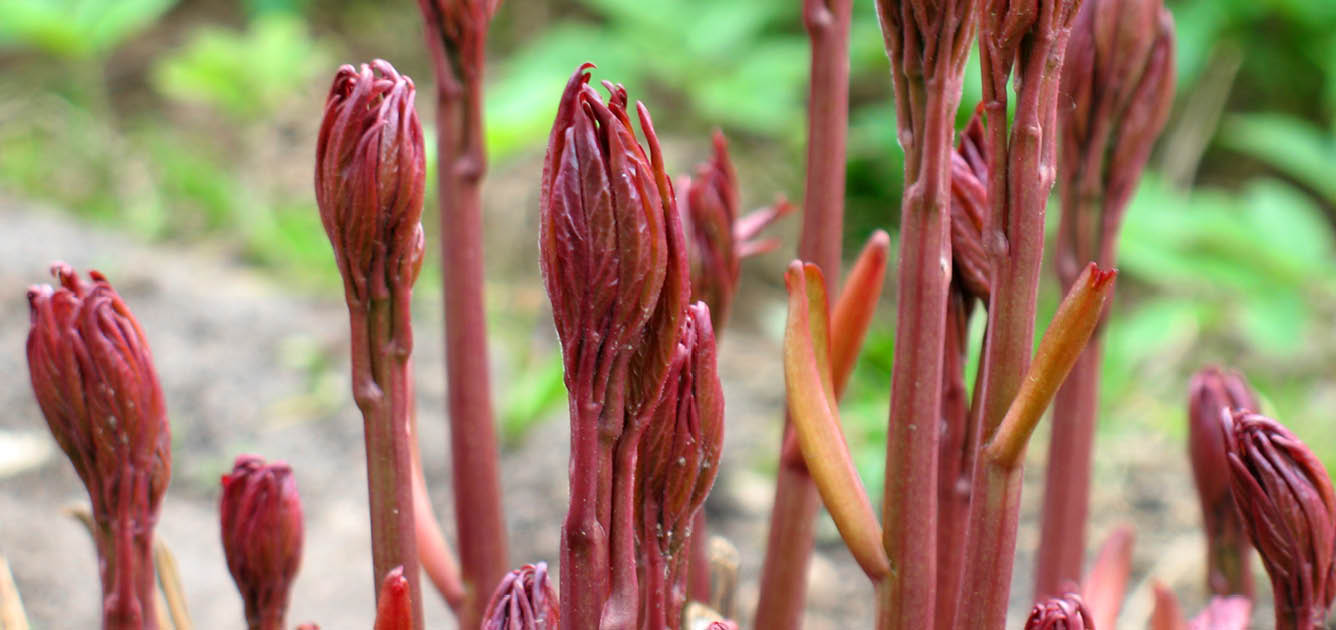
2. Give them sun
Within the UK, Peonies love to grow in a sunny position. For more southerly climates, where the sun’s rays are stronger, some shade may be necessary. It’s common to see bamboo peony umbrellas giving some shade to plants in China or Japan, where sunlight is more intense. That being said, there are many varieties that will tolerate some shade, but if your peony flower is in heavy shade, it will be reluctant to flower well.
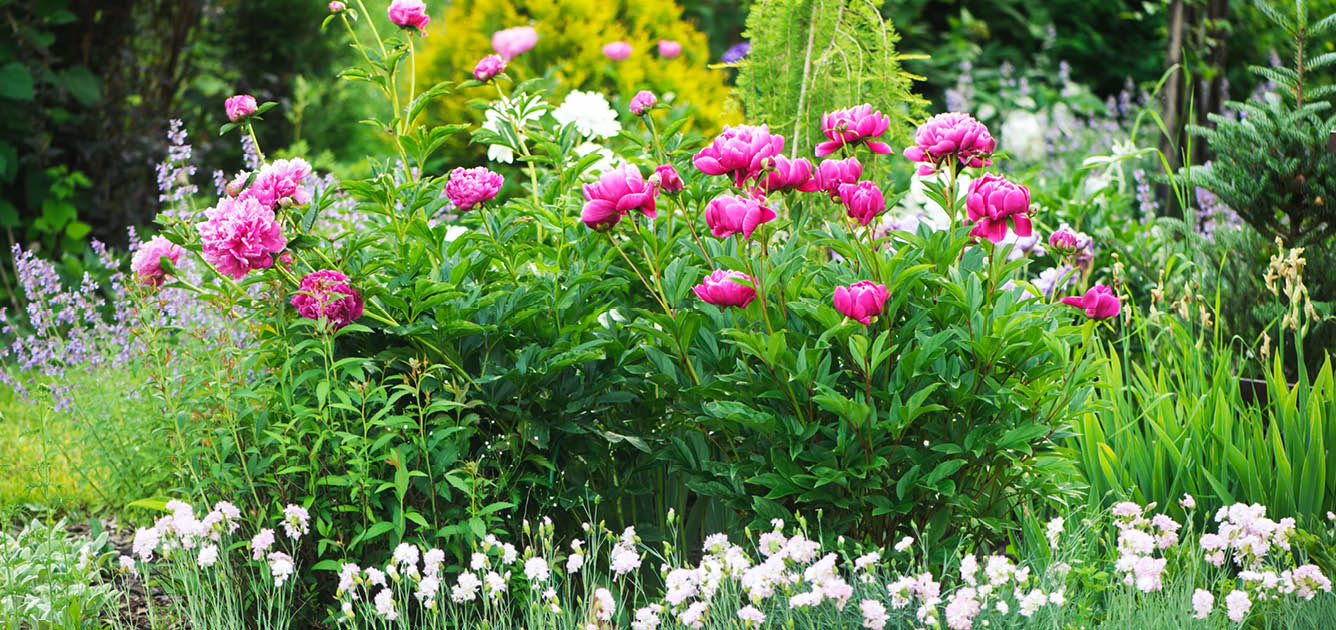
3. Grow in a free draining soil
Peonies will grow in any soil but will perform best in fertile, free-draining soil. These plants are quite accommodating of soil pH and are also happy in chalky or clay conditions, so long as it’s free draining. They don’t like to sit in water in the winter.
These rules only apply to planting your peony, as once it’s in some free draining soil at the right depth, it will be quite content to be left alone. If you are blessed with rich, fertile soil you probably don’t even need to feed your peony! If you are growing in pots or in more impoverished soils, a balanced, general fertiliser such as Growmore or Vitax Q4 applied in the spring will provide all their needs.
Peonies are relatively maintenance free, but the herbaceous varieties will benefit from having some support via a meshed peony ring, as this will stop rain-soaked flowers bending over. It is also a good idea to cut back and remove the dead leaves in autumn to avoid peony wilt.
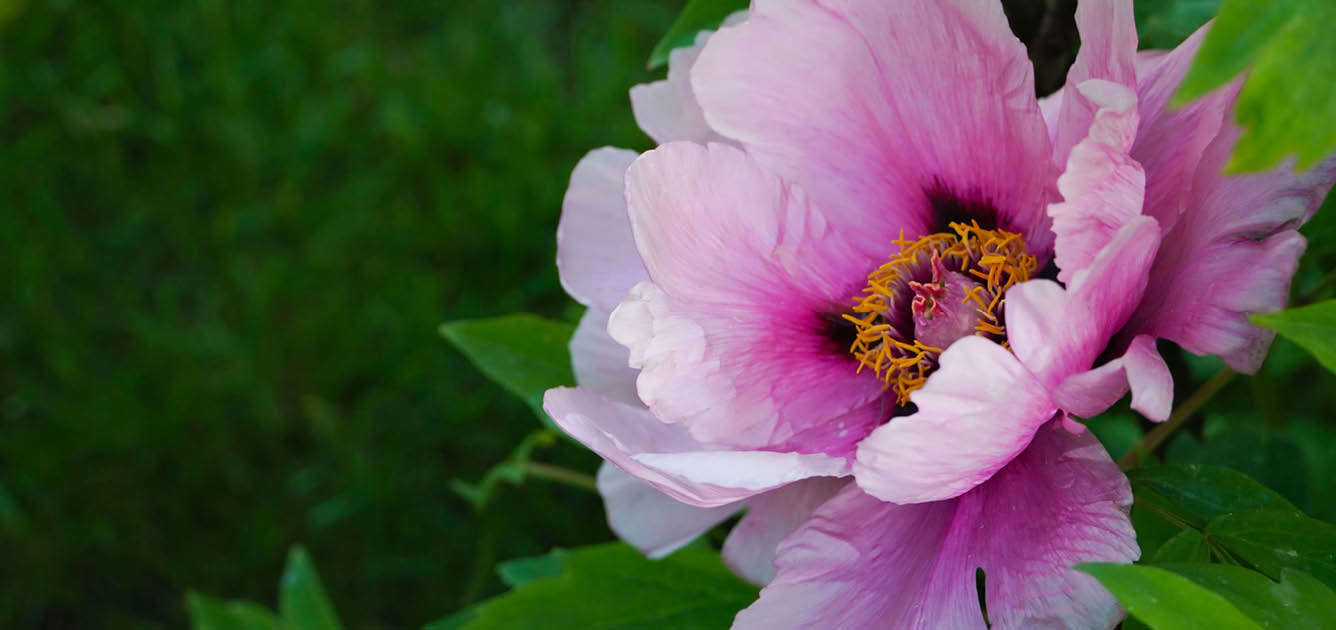
The beauty of Itoh peonies
Itoh, or intersectional peonies are a cross between herbaceous and tree types. They produce compact plants up to 90cm tall that emerge in spring with masses of flowers and then die down completely in winter. Often lightly fragrant, they have much larger flowers that bloom for longer than herbaceous peonies. Inheriting some tree peony robustness, they generally don’t require any staking to support their larger flowers.
The process of hybridising an herbaceous peony and a tree peony can take from three to five years for the new plant to mature and bloom. That’s all before the breeder decides if they even like the new plant and whether the cross has been successful.
If the breeder does like the result, the next step is to split the plant during autumn to create more plants for a consistent crop. Overall, it usually takes ten to fifteen years to breed a new peony flower that can be released on the market.
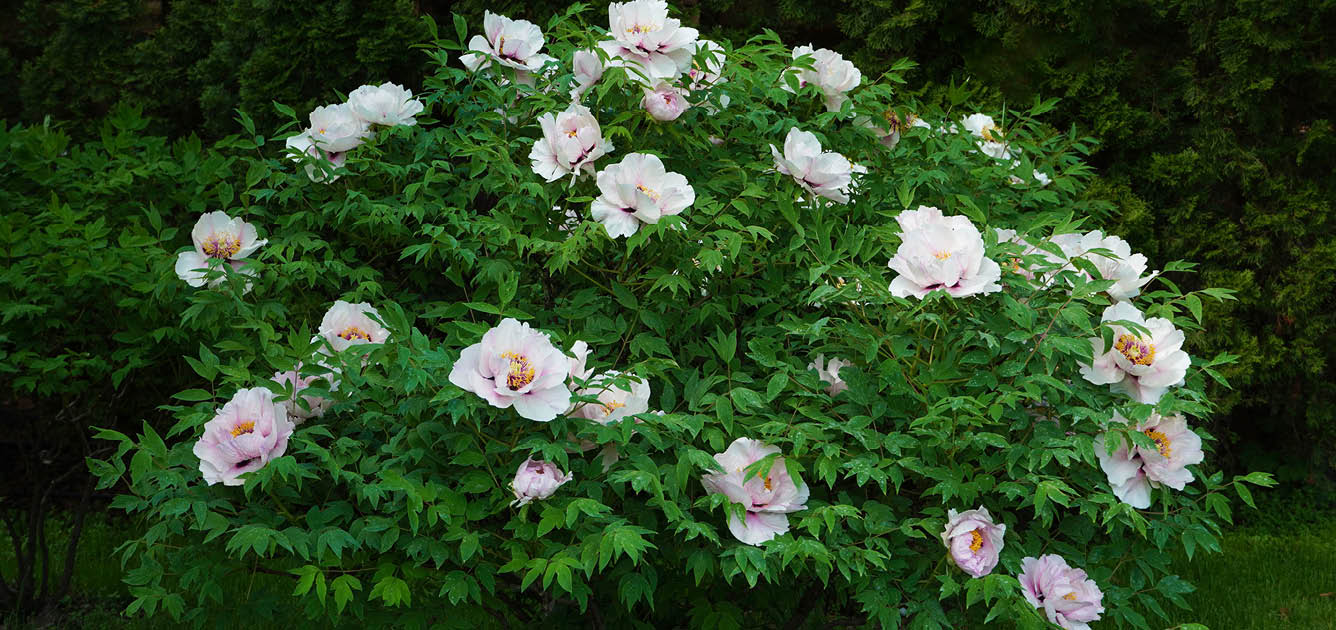
Itoh peonies are compact plants up to 90cm tall that emerge in spring with masses of flowers and then die down completely in winter.
With the amount of time needed to breed Itoh peonies, they remain relatively rare, which is reflected in their cost. There are, however, few other plants which offer such value for money in the garden. Itoh peonies boast extreme longevity, ease of flowering and hardiness, as well as being low maintenance.
They also look great in large patio containers and make excellent border or specimen plants in the garden. If you do plant an Itoh peony in a container, feed it annually with a general, well-balanced feed.
Treat them the same as herbaceous by giving them a sunny location and fertile, free draining soil and a trim in autumn and they’ll reward you year on year with their large, stunning flowers.
Like other peonies, Itoh peonies are also very hardy, suffering little from pests and diseases. They’re pretty much resistant to peony blight and seldom suffer from slug, snail, rabbit, or deer damage.
Ants
It’s well known that peony plants can attract ants due to the sugary nectar that’s naturally produced by budding plants. Some people go to extremes to rid their peonies of ants when, in reality, ants are some of the best friends a peony could have. By secreting a sugary substance during bud development, the plants are likely recruiting ants to protect the flowers from other grazing insects.
The good news is that this relationship is a temporary affair. As soon as the blooms have opened, the ants will abandon the plants in search of new sustenance. Overall, it’s best to leave those ants alone and enjoy the free pest removal services they provide every spring.
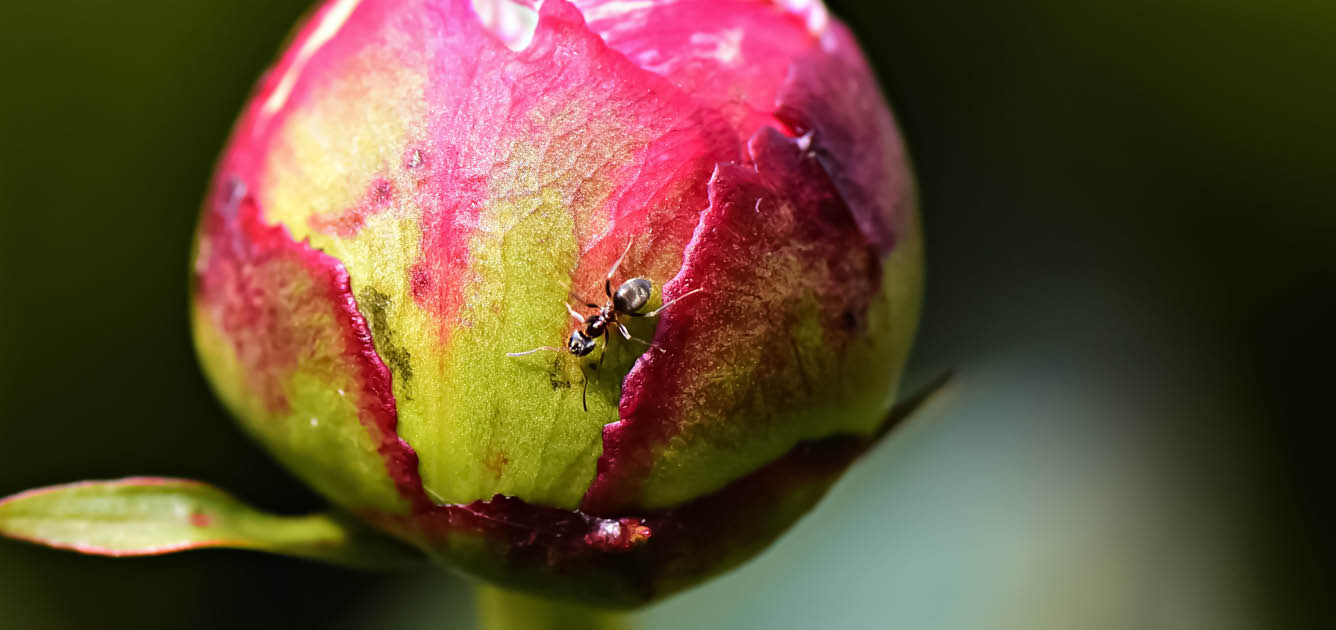
Some people go to extremes to rid their peonies of ants when, in reality, ants are some of the best friends a peony could have.
Summary
- Provide support for large flowering varieties, with grids or peony rings
- Great for naturalising under deciduous trees or growing in pots
- Water well during flower bud development
- Provides colour and interest from Spring into Summer
- If needed, carefully move, or divide in autumn, keeping at least 5 buds per root.


